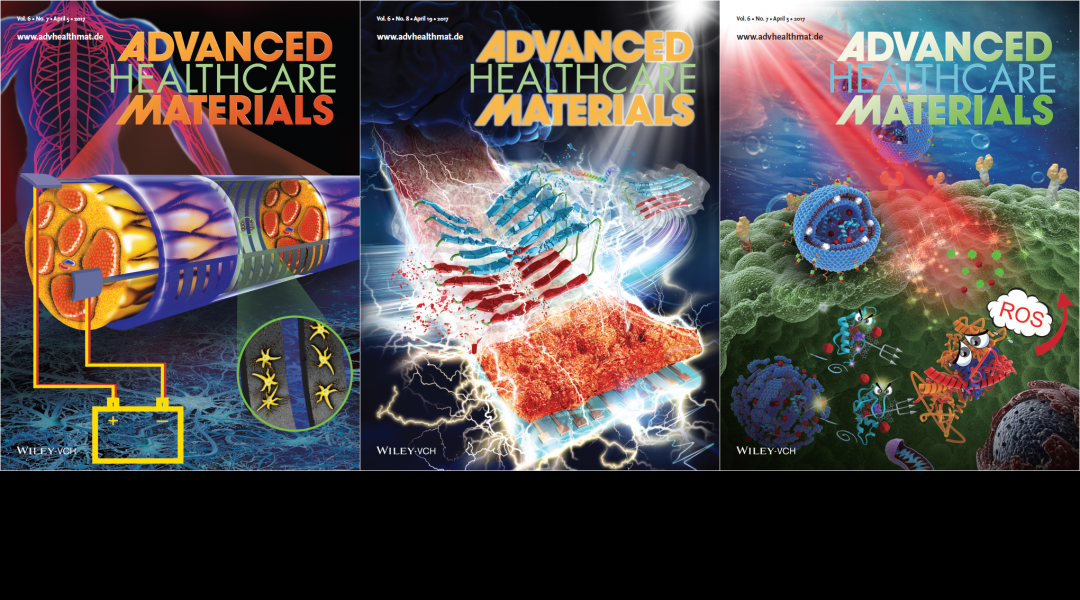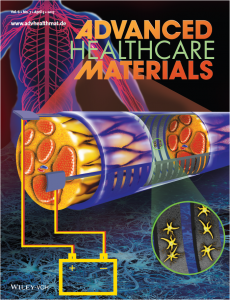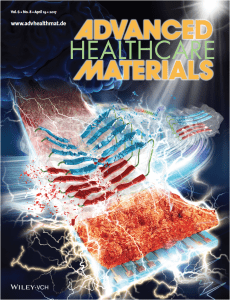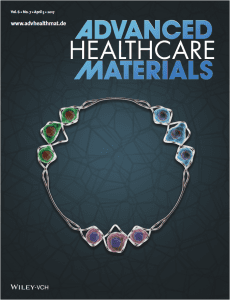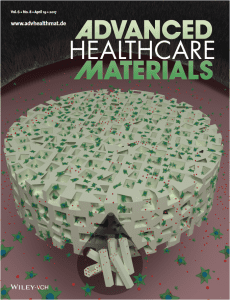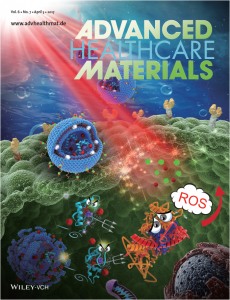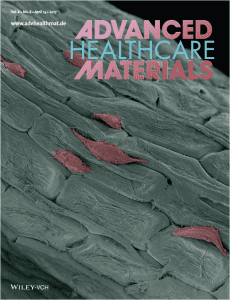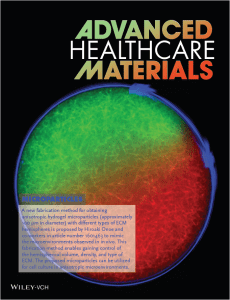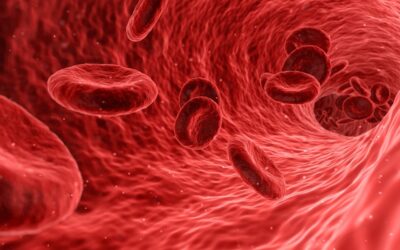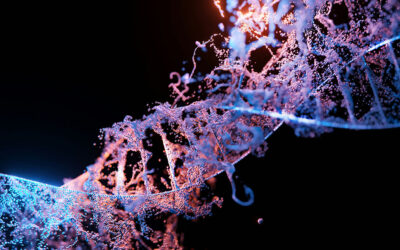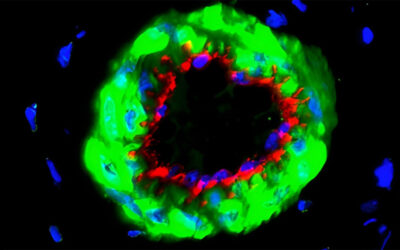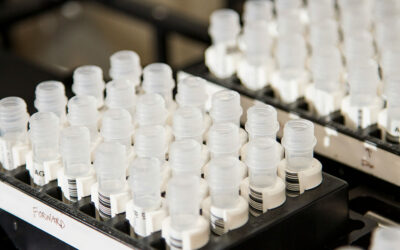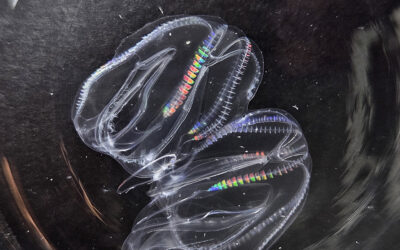Advanced Healthcare Materials celebrates its 5th birthday this year! Since 2012 we have been bringing you the latest breakthroughs in biomedical materials science with a strong focus on improving human health, and we will continue to do so in 2017. Read more about this in our latest editorial.
No access to our published content yet? Make sure to recommend Advanced Healthcare Materials to your librarian. More information can be found here.
In this monthly feature, we highlight the artwork on the covers of both issues of Advanced Healthcare Materials, and of course the research behind it. You can find this month’s issues here and here. Click on the headers below to get to the corresponding papers. Also check out our previous monthly top-downloaded papers feature here.
A group of scientists at Iowa State University and Ames Laboratory led by Jonathan Claussen demonstrates how the application of electrical stimuli via an inkjet-printed graphene electrode can induce the differentiation of mesenchymal stem cells into Schwann cell-like phenotypes. This thin and flexible graphene-based electrode could potentially be used as an implantable neural interface material for peripheral nerve regeneration.
The self-assembly of β-amyloid peptides into aggregates is a major pathological hallmark of Alzheimer’s disease that affects more than 11% of the population aged over 65. Chan Beum Park and his team at the Korea Advanced Institute of Science and Technology show that β-amyloid self-assembly can be suppressed effectively via a photoelectrocatalytic mechanism using a hematite-based photoelectrode platform.
One to trap them, one to guide them and one to rule them all! To ensure the proper functioning of biohybrid microsystems featuring multiple types of cells, a predefined cell arrangement needs to be maintained over time. Maurizio Gullo and his co-authors in Germany and Japan present novel wireframe-like 3D microscaffolds inspired by the extracellular matrix, which are capable of trapping cells, guiding cell migration and preserving the specific arrangement of multiple cell types.
A method for recruiting immune cells to subcutaneously-implanted hierarchical macroporous and mesoporous silica scaffolds is described by Jaeyun Kim and co-workers at Sungkyunkwan University, Korea. The magnification of their scaffold in the cover image indicates that the scaffold is composed of mesoporous silica microparticles, which are releasing pro-inflammatory signals to recruit host immune cells.
Gold nanoclusters and chlorin e6 co-loaded, spatiotemporally controllable, pH-sensitive liposomal nanocomposites, internalized by tumor cells via endocytosis, are described by Fuping Gao, Xueyun Gao and their collaborators from the Chinese Academy of Sciences. The gold nanoclusters and chlorin e6 are quickly released into the cytoplasm due to the acidic environment inside the lysosomes. In this way, the gold nanoclusters can effectively inhibit TrxR in the cytoplasm to weaken cell protection mechanisms against photodynamic therapy and generate photodynamically induced intracellular reactive oxygen species, ultimately enhancing the effect of photodynamic therapy.
Human dermal fibroblasts seeded on a decellularized parsley stem are described by a team of researchers led by William Murphy from the University of Wisconsin-Madison. Plant tissues can be decellularized and biofunctionalized to allow adhesion of human cells. These adaptable scaffolds possess elevated hydrophilicity and excellent water transport abilities innate of plant tissues. These scaffolds are shown to enable efficient expansion of human cells for prolonged periods of culture.
A new fabrication method for obtaining anisotropic hydrogel microparticles (approximately 100 μm in diameter) with different types of extracellular matrix hemispheres is proposed by Hiroaki Onoe and co-workers at Keio University and Tokyo Institute of Technology, thereby mimicking the microenvironments observed in vivo. This fabrication method enables gaining control of the hemispherical volume, density, and type of extracellular matrix. The proposed microparticles can be utilized for cell cultures in anisotropic microenvironments.

